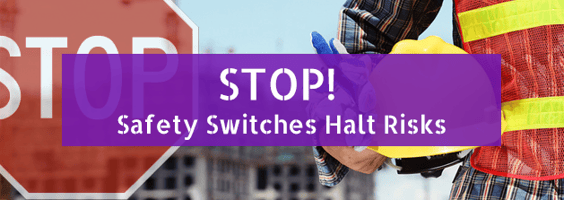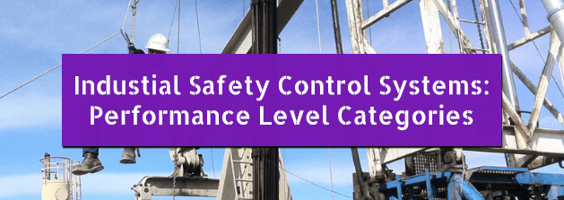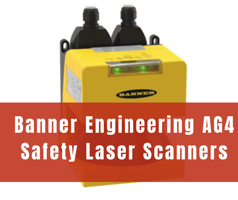STOP! When you were a kid playing ball your parents probably had to yell this at least once when...
Safety Laser Scanners vs. Safety Mats – Which One Do I Choose?
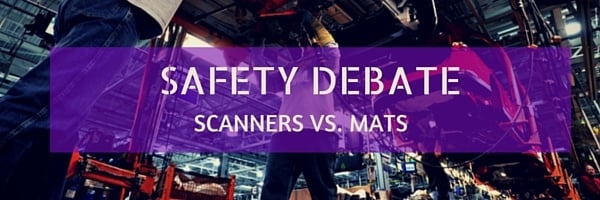
For many decades safety mats have been used as a standard form of area protection in the plant environment. Though an old technology by design, safety mats have proven to be a tried and true means of protecting workers from harm.
Safety mats work (typically) with multiple points of contact (normally open) that close when enough weight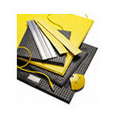 is applied to the mat. This sends a signal to the controller which then relays the signal to stop the guarded machine(s).Though they are designed for use via direct contact, they are subject to abuse: physical, environmental, and operational. They eventually wear out (even if you don’t drive a fork lift over them!) and need to be replaced.
is applied to the mat. This sends a signal to the controller which then relays the signal to stop the guarded machine(s).Though they are designed for use via direct contact, they are subject to abuse: physical, environmental, and operational. They eventually wear out (even if you don’t drive a fork lift over them!) and need to be replaced.
Safety laser scanners have been on the market since the 1990’s but have always  come at a higher price point than the safety mat, up to 3 or 4 times higher. The price discrepancy has shrunk in the past few years however, which makes the decision more difficult or easy depending on your point of view.
come at a higher price point than the safety mat, up to 3 or 4 times higher. The price discrepancy has shrunk in the past few years however, which makes the decision more difficult or easy depending on your point of view.
When the total cost-of-ownership is considered, the overall ROI for safety scanners is actually much greater than safety mats. Why? If you have to replace a safety mat once or twice, you’ve exceeded the cost of a safety scanner.
Understanding Safety Laser Scanner Technology
Safety laser scanners use time-of-flight technology. A pulsed laser beam is emitted and reflected if it meets an object. The scanner’s receiver registers the reflection. The time between transmission and reception of the impulse is directly proportional to the distance between the scanner and the object.
The shape of the target object is determined from the sequence of impulses received. The measurement data is available in real time for evaluation via the data interface. Safety laser scanners define safety and warning zones. Unlike a safety mat, these zones can be programmed into specific shapes and areas.
By programming warning zones to notify someone before they actually cross into a danger zone, it does two things:
- First it allows the individual to change their activity to again enter a safe area.
- Second it can allow the guarded machine to properly shut down rather than an emergency stop which can harm the equipment or ruin the product being manufactured.
Advantages of Safety Laser Scanners
Laser safety scanners provide a number of key advantages over safety mats:
- Works without contact
- Adjustability (Area and Sensitivity)
- Single device
- Programmable warning zones
Safety laser scanners function without needing physical object contact by providing protection through infrared lasers. One of the biggest issues with safety mats is that they stop working, either because people repeatedly step on them (of course) or because tools, products, lubricants, fork trucks, or other environmental “hazards” come into contact with them. This causes downtime and increases the frequency of replacement. Safety laser scanners are typically mounted in a secure area of the machine, out of harm’s way. Oil and grease seepage problems will not cause the laser scanner to trip because you can adjust them to ignore those issues.
Limited Use of Saftey Mats
Safety mats are often limited in use by their initial application. In manufacturing facilities, safety mats are purchased to cover specific machines in specific locations. When new machines are bought, an operation grows into new facilities, or floor plans are adjusted within existing facilities, an original safety mat may no longer satisfy the requirement. A new mat must be purchased, on the other hand, with the safety laser scanner and its warning and safety zones, everything is flexible and reprogrammable.
Self-Contained Devices
Safety laser scanners are self-contained devices, they do have memory modules which will help if a scanner is damaged by automatically downloading the data sets (set zones) into the replacement scanner. This is extremely beneficial when it comes to down times on the plant floor. By contrast, safety mats typically have multiple parts: the mat, the connecting cable and a control box. Because they are not “one-size fits all,” mats also present stocking issues.
Programmable Warning Zones
Programmable warning zones may be the most important feature of the safety laser scanner. It provides another indication—to operators, people moving through the area, fork truck drivers, etc.—that they are getting too close to the machine, and will interfere with its operation if they come any closer. If the scanner senses somebody in the described warning field, it gives a discrete output such as a flashing light or audio signal.
So which will you choose?
It may seem like it is a no brainer and that a safety laser scanner is the only way to go. Wouldn’t that be simple! Unfortunately there are applications that still call for safety mats due to certain environments and activities around machinery.
Then of course there are light curtains, rope pull switches, hard guarding with door interlocks and other means of creating a safe working environment as well. If you have an application or a question regarding the use of any of these safety products, feel free to reach out to our Saftey Specialist.



